Each spring we await the arrival of swans on Kootenay Lake. Certainly, they are prominent in my phenology.
Swans have already been seen recently on the South and North Arms of the Lake. Yesterday, seven Tundra Swans were reported on the West Arm at Kokanee Creek Park. This morning, I went to see them. Alas, those swans had finished eating and had flown on their way.
Fortunately as I wandered around, ten more Tundras flew in. It was grand. Usually, I only get to see them feeding in the shallows, but this group offered me a flyby.
Circling to lose altitude, seven of the ten tundras are seen as they approach the Lake.
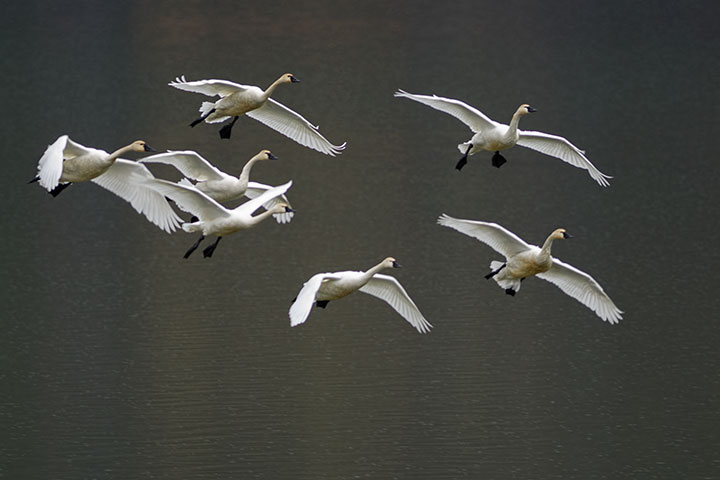
They fly right past me on their gently curved path.
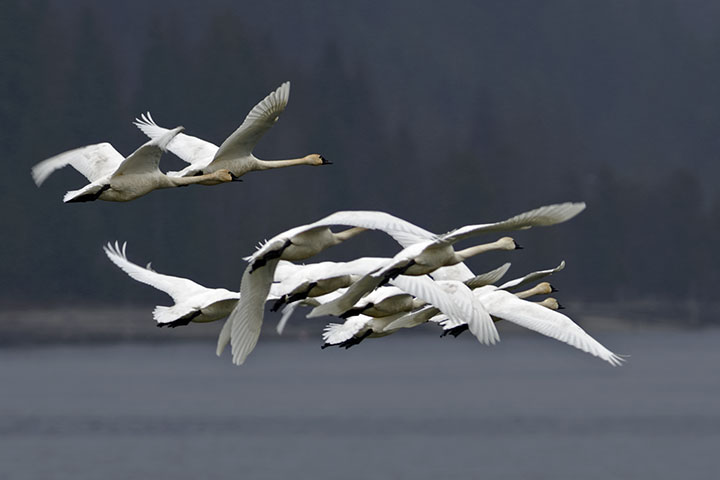
The ten of them touch down out in the deeper water of the Lake.
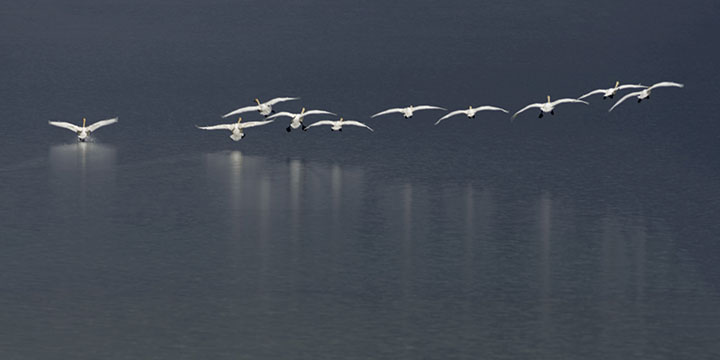
These tundras are hungry. They have travelled a great distance and still have the flight to the high arctic ahead of them. So, having touched down, they promptly head to the shallows to feed. They are coming straight towards the portion of the shore where I am obscured by trees.
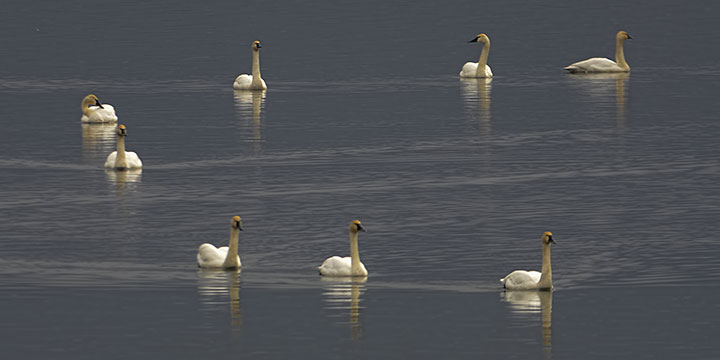
I might note that dogs are prohibited from this portion of the Park’s beach. Yet, just as the hungry swans approach the feeding area, a man with two off-leash dogs saunters along the shore. The swans abruptly turn and flee to the deep water, unsated. Well, obviously those swans should have known better than to arrive on a weekend, a time when scofflaws abound.
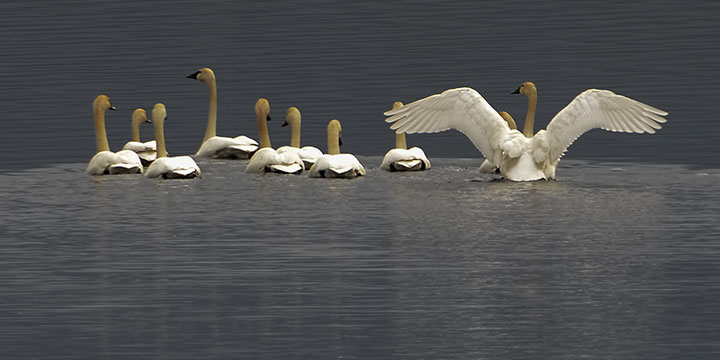

Thank you Alistair for those beautiful photos of the swans, I didn’t know they landed on our lake. Years ago I drove to Creston flats specically to see the swans and could only view them from a distance.
Lois, two species visit us here: Tundra Swans and Trumpeter Swans. Some years we get more Tundras, other years, more Trumpeters, but they are always fun to watch.
Incidentally, congratulations on having been chosen Nelson’s Citizen of the Year for 2012. That is impressive.
Wonderful photos – too bad the dogs came. 🙁 I have been trying to catch them at the south end of Kootenay Lake, but was only able to view them from a distance as well. They are so beautiful!
Leone, I had thought of heading over there to see them a short time ago, but decided against it when I realized they would be too distant for good pictures—but then, they probably would be too distant for dogs also.
Thanks for sharing your photos Alistair, I enjoy them so much. I was rewarded with a pair of Tundra swans today on an excersion to the head of Kootenay Lake. They were quite close to shore and very vocal at first, then settled in to feed quietly. Only two but made our journey well worth it.
Lorna, you have just reminded me of something I did not mention: today was the first time I have been able to hear the Tundras talking among themselves.
None of your photos clearly show the face to see the yellow bill mark. Although Tundras can sometimes show the rusty head staining this is usually a trait of Trumpeters. Tundras tend to rest the lower neck on the back while trumpeters usually keep the neck perfectly straight. Because of this when seeing swans Trumpeters look to sit slightly lower in the water with the junction of the back and the neck going right down to the water. I blew up several of the photos trying to see the heads better. On the last photo several of the birds have their heads turned and they seem to show the broad black “v” going back to the eye with no sign of yellow. Because of the yellow bill marking Tundras tend to show the area in front of the eye as a narrow strip rather than a broad black v. The “murmuring” of the two species sounds almost identical and I have never been able to reliably tell the two by these sounds. I’m not convinced but I would have called these Trumpeters.
In response to Doug’s perceptive analysis, I sent him some images at a far higher resolution than those that appear in my posting. He now agrees that these swans “are most likely Tundras.”
As always, the images are spectacular and inspiring me to get my camera out to shoot. Thank you for sharing these photographs.
I just came from Kokanee Creek and there are now signs about dog restrictions all over the day-use area, even on the trail by the flood plain. Still saw people with dogs on the sand bar.